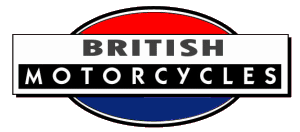

The JES continued in this form for many years and was also built and listed as the City and the Imp.
J. E. Smith, the J.E.S. Motor Works; Gloucester.
1920 The engine was enlarged to 142cc and inclined in the frame, but the original simple concept remained.
1921 Added to the list was a 170cc two-stroke miniature motorcycle with two speeds and a vertical engine.
1922 A single-speed version appeared.
1923 The four-stroke was dropped, but the single-speed two-stroke ran on with a three-speed version. To these were soon added a lightweight with four-speed chain-transmission and the choice of 247cc two-stroke or 249cc ohv Blackburne engines - a move to more conventional machines.
1924 The company acquired the Connaught marque of Birmingham, and for that year there were just two lightweight models. One with the 247cc two-stroke, but the other with a 348cc sv engine. Both had three-speed Burman gearboxes and chain-cum-belt drive. The auxiliary motor set was re-introduced. This was a 123cc two-stroke engine, chain drive and in either gents' or ladies' style of bicycles frame. It was also available as a conversion kit. The make did not survive beyond the end of that year.
J.E.S. (Stand 111.)
1 h.p.; 55.6x60.3 mm. (146 c.c.); single-cylinder four-stroke; inlet overhead exhaust valves; mechanical lubrication; J.E.S. carburetter; gear-driven magneto; single-speed gear; belt drive; Dunlop 26xl¾ in. tyres.
J.E.S. Motor Works, Gloucester
Originally designed as an attachment to a pedal cycle, and still obtainable for this purpose, the J.E.S. engine is shown fitted to a specially built machine with spring forks. The power unit, although so small, is extremely interesting. A very neat automatic carburetter of small size is fitted, and the rocker gear for the overhead inlet valve is contained within the induction pipe. The valve chamber is separated from the cylinder by a large air space to assist in cooling, and mechanical pump lubrication with a large oil sump is provided. An "overhung" crankshaft is used, with a light return crank on the timing side to drive the valve gear. By undoing a few screws on the flywheel side of the crank case, the crankshaft can be removed bodily. A magneto is supported behind the cylinder and gear-driven, and the whole engine is slung within the frame by aluminium clamps. Transmission is by belt with a jockey pulley; and an XL'All saddle and Druid spring forks are fitted. As the machine is nominally an assisted pedal cycle, pedalling gear is provided, but we are informed that the excellent design of the engine makes the pedalling gear almost unnecessary.
Besides the machine just named, the J.E.S. Motor Works are also exhibiting a 2 h.p. two-stroke of normal motor cycle build. The two-stroke engine is of their own manufacture, and is provided, like the four-stroke machine, with the new J.E.S. carburetter. The Runbaken magneto is gear-driven.
Olympia Show. The Motor Cycle, December 2nd, 1920.

One of the simplest and lightest motor cycles on the market - the single-speed, two-stroke, 1½ h.p. J.E.S.
J.E.S.
The J.E.S. motor cycle returns to Olympia with a splendid reputation accruing from several years' service. It is a machine which forms a step between the auxiliary-powered pedal cycle and the motorcycle of conventional type.
Several models will be exhibited, including single and two-speed two-stroke machines having a bore and stroke of 60x60 mm. (170 c.c). The single-speed models are now obtainable with a free engine clutch pulley.
J.E.S. miniature machines will also be exhibited with a new four-stroke engine of 60x60 mm. (170 c.c), and a lady's model fitted with this engine will be staged.
If you have further information or a query related to this page, please contact us